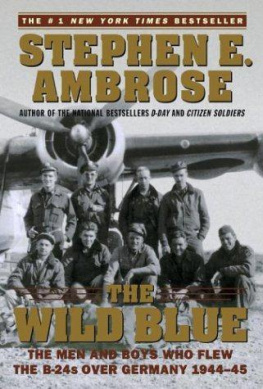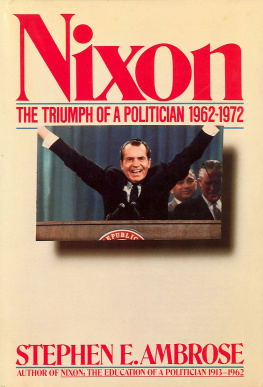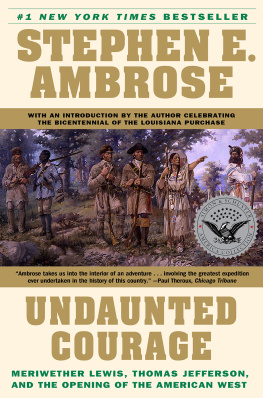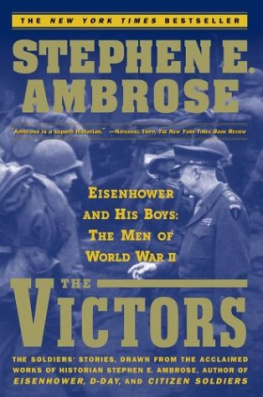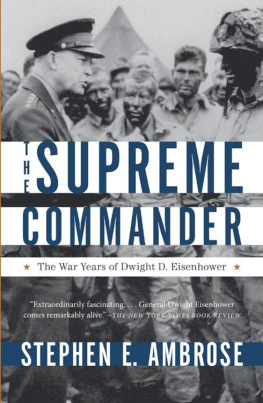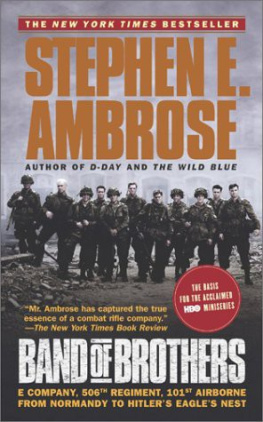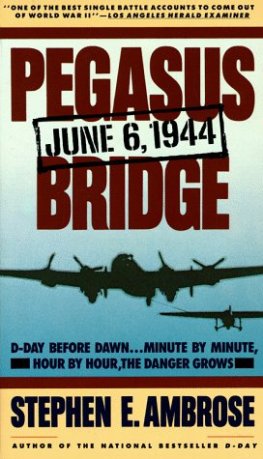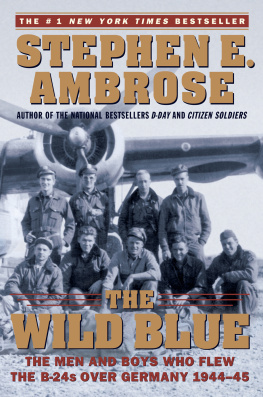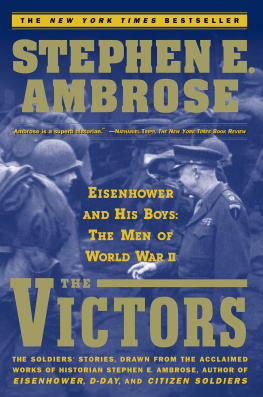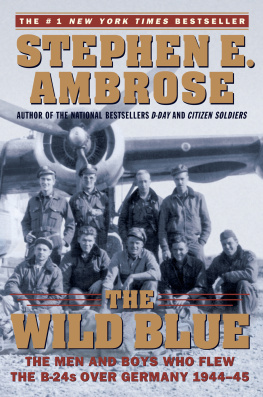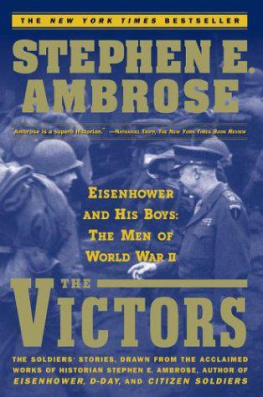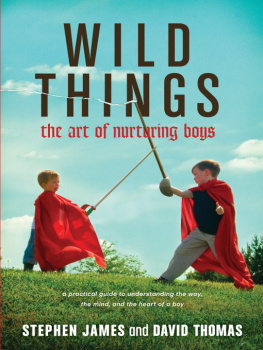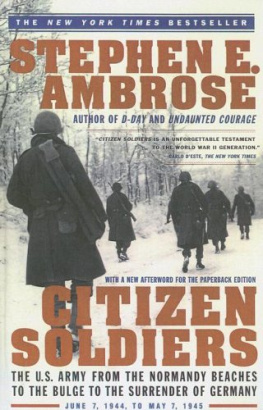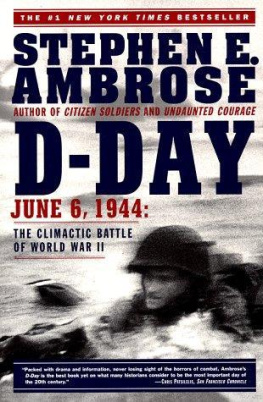Stephen E. Ambrose - The Wild Blue : The Men and Boys Who Flew the B-24s Over Germany 1944-45
Here you can read online Stephen E. Ambrose - The Wild Blue : The Men and Boys Who Flew the B-24s Over Germany 1944-45 full text of the book (entire story) in english for free. Download pdf and epub, get meaning, cover and reviews about this ebook. year: 2002, publisher: Simon & Schuster, genre: Detective and thriller. Description of the work, (preface) as well as reviews are available. Best literature library LitArk.com created for fans of good reading and offers a wide selection of genres:
Romance novel
Science fiction
Adventure
Detective
Science
History
Home and family
Prose
Art
Politics
Computer
Non-fiction
Religion
Business
Children
Humor
Choose a favorite category and find really read worthwhile books. Enjoy immersion in the world of imagination, feel the emotions of the characters or learn something new for yourself, make an fascinating discovery.
- Book:The Wild Blue : The Men and Boys Who Flew the B-24s Over Germany 1944-45
- Author:
- Publisher:Simon & Schuster
- Genre:
- Year:2002
- Rating:3 / 5
- Favourites:Add to favourites
- Your mark:
- 60
- 1
- 2
- 3
- 4
- 5
The Wild Blue : The Men and Boys Who Flew the B-24s Over Germany 1944-45: summary, description and annotation
We offer to read an annotation, description, summary or preface (depends on what the author of the book "The Wild Blue : The Men and Boys Who Flew the B-24s Over Germany 1944-45" wrote himself). If you haven't found the necessary information about the book — write in the comments, we will try to find it.
Stephen E. Ambrose: author's other books
Who wrote The Wild Blue : The Men and Boys Who Flew the B-24s Over Germany 1944-45? Find out the surname, the name of the author of the book and a list of all author's works by series.
The Wild Blue : The Men and Boys Who Flew the B-24s Over Germany 1944-45 — read online for free the complete book (whole text) full work
Below is the text of the book, divided by pages. System saving the place of the last page read, allows you to conveniently read the book "The Wild Blue : The Men and Boys Who Flew the B-24s Over Germany 1944-45" online for free, without having to search again every time where you left off. Put a bookmark, and you can go to the page where you finished reading at any time.
Font size:
Interval:
Bookmark:
THE WILD BLUE
THE MEN AND BOYS WHO FLEW THE B-24S OVER GERMANY 1944-45
Stephen E. Ambrose
For Eleanor
TABLE OF CONTENTS
AUTHORS NOTE
PROLOGUE
CAST OF CHARACTERS
CHAPTER ONE - Where They Came
CHAPTER TWO
CHAPTER THREE
CHAPTER FOUR - The
CHAPTER FIVE
CHAPTER SIX - Learning
CHAPTER SEVEN
CHAPTER EIGHT - The
CHAPTER NINE - The
CHAPTER TEN - Missions
CHAPTER ELEVEN - Linz:
EPILOGUE
ACKNOWLEDGEMENTS
BIBLIOGRAPHY
About the Author
Also by Stephen E. Ambrose
Copyright
NOTES
AUTHORS NOTE
I HAVE BEEN A FRIEND and supporter of George McGoverns for nearly three decades. I knew something about his career in the Army Air Forces, which I always felt he could have used to more effect in his 1972 presidential campaign. Politics aside, I had long been an admirer of what he had done in his B-24 bomber. He seemed to me to be a good representative of his generation, a man who had risked all not for his own benefit but to help bring about victory. In the summer of 1999, McGovern, his wife, Eleanor, my son Hugh, and I were together for dinner. In the course of the conversation, McGovern said he had done some interviews recently with reporter Michael Takiff, who was interested in doing a book on McGoverns World War II career. I said that was a fine idea and told McGovern to tell Takiff that he should open with the story of the bomb McGoverns B-24 dropped on a farmhouse in Austria, and the sequel. McGovern replied that he wished I were writing the book and asked if I would do it. I hesitated, not out of any lack of interest but because Takiff had already begun his work. McGovern urged me to talk to Takiff to see if he would yield to my being the writer and if he would provide me with copies of his interviews with him. I did and Takiff agreed. So I told McGovern and my editor, Alice Mayhew, that I would do it. Alice liked the idea - she is McGoverns editor as well as mine - but said that it should be a book not only about McGovern but also about the men with whom he served. As always - or at least almost always - she was right.
I have long wanted to study and write about the American airmen of World War II. Previously I had written books about the high command in the European war, then turned to the men on the front line - a British airborne company (PegasusBridge) and an American Company of the 101st Airborne, E Company, 506th Parachute Infantry Regiment (Band of Brothers). In a book entitled D-Day and a follow-up called Citizen Soldiers, I had studied the role of junior officers and enlisted men fighting on the ground. In the course of preparing those books I had interviewed many of the men doing the actual fighting. What I wanted to do next after a book on the first transcontinental railroad was a book on the American airmen, not those at the top of the command structure but the men who flew the bombers. How did they do it? That was my question. McGovern and his crew and his squadron, the 741st of the 455th Bomb Group of the Fifteenth Air Force, seemed a good way to try to answer at least part of the question. My resolve was strengthened because of my respect for George McGovern and his men; my curiosity about how a son of South Dakota became, at age twenty-two, a bomber pilot; my interest in how American designers and workers and the industrial plants created the worlds greatest air force; my wanting to learn about the strategic air campaign and how it was planned and carried out; and my desire to tell readers the story of how the leading opponent of the Vietnam War was, in World War II, a distinguished bomber pilot. So I went to work. I did a lot of reading, of both books and memoirs. I am in the deepest debt to all those who have written about the air war, or their own experiences, including but not limited to all those cited in the notes and bibliography. Most of all I need to thank and acknowledge my gratitude to Michael Sherry, author of The Rise of American Air Power, Wesley Frank Craven and James Lea Cate, editors of the seven-volume official history, The Army Air Forces in World War II, and Colonel Horace Lanford, USAF, who did a four-volume mimeograph work entitled 741st Bomb Squadron History. I also deeply indebted to my college fraternity brother and lifelong friend Jim Burt, an Air Force pilot after graduation, who read the manuscript and saved me from many errors. Hugh and I did a lot of interviews, with McGovern and his surviving crew, with the pilots and men of the 741st Squadron and the 455th Bomb Group and others, each listed in the Acknowledgments. We are grateful to all of them. On October 9, 2000, Hugh and I rode in a B-24 and a B-17. We got to sit in the co-pilots seat and fly the airplanes. It was an extraordinary experience. We thank the Collings Foundation (
Box 248, Stow, Massachusetts01775
), who made it possible. The foundation flies the two bombers to airports around the country so that everyone, especially children, can experience the thrill of examining and flying in a World War II airplane.
The B-24 is the only one still flying. The foundation paid $1.3 million and
required thousands of hours of volunteer labor to restore and reconstruct this
vintage plane called Dragon and His Tail, with appropriate artwork on the nose. Thousands come to see, and a few get to ride, in the B-24 and the B-17. They can climb from fore to aft inside the planes, into the nose and tail gunner turrets. They can sit at the bombsight, or at the radiomans position. They can move forward or aft on the catwalk, see the bombs in their rack, or the oxygen tanks and everything else. On the B-24 the waist windows are open. In flight, wind streams flow through the planes to the tail. Although Hugh and I went up only a couple of thousand feet, on a lovely October day in central Pennsylvania, from Williamsport to Harrisburg, it was cold. The flights in the big craft were bumpy, noisy - and a perfect delight.
Hugh and I got to fly thanks to the children of the Makos family - some still in
high school, others getting started on their college educations - who have
created the magazine Ghost Wings, which is written and published by them. It is
devoted to airplanes of the past and the men and their planes of World War II,
the Korean War, the Vietnam War, the Cold War. Educating our children about how
their freedoms came about is a sacred cause to me, so naturally I was drawn to
the magazine. Now my debt to Ghost Wings includes what the family did to make our
trip to Williamsport so special.
Flying the B-24 and the B-17 from the co-pilots seat, even in smooth weather - little wind, few clouds - made Hugh and me realize how cumbersome the bombers are, how long it takes for them to respond to the controls, how difficult they are to turn. But the flying brought smiles to our faces and joy to our hearts, smiles as big as all outdoors and joy as deep as the ocean. It was an experience with machines that could be compared only to being at the controls of a locomotive going up the Sierra Nevada. And it increased beyond measurement our respect for and admiration of the pilots and crews who flew those planes on combat missions that lasted six, eight, or ten hours. We encountered no flak. There were no enemy fighters shooting at us. We dont know how the airmen did it - but we appreciate what they did even more than before. My uncle, Ty Ambrose, was a twenty-one-year-old co-pilot on a B-26 in the Eighth Air Force. In June 1944, he married Sabra Jean Starr, his girlfriend at IllinoisStateNormalUniversity. Then he went overseas. On September 16, 1944, returning from a mission over the Continent, his plane crashed on landing in England and blew up. His body was never recovered.
My wife, Moira, who helped as she always does, in the research and in being the first to read or listen to a chapter, commented that what struck her most was how young the airmen were. Georges Clemenceau put it best. In a 1944 letter to Tex McCrary, author of First of the Many, Bernard Baruch quotes Clemenceau, who wrote, They were kittens in play but tigers in battle.
Font size:
Interval:
Bookmark:
Similar books «The Wild Blue : The Men and Boys Who Flew the B-24s Over Germany 1944-45»
Look at similar books to The Wild Blue : The Men and Boys Who Flew the B-24s Over Germany 1944-45. We have selected literature similar in name and meaning in the hope of providing readers with more options to find new, interesting, not yet read works.
Discussion, reviews of the book The Wild Blue : The Men and Boys Who Flew the B-24s Over Germany 1944-45 and just readers' own opinions. Leave your comments, write what you think about the work, its meaning or the main characters. Specify what exactly you liked and what you didn't like, and why you think so.

